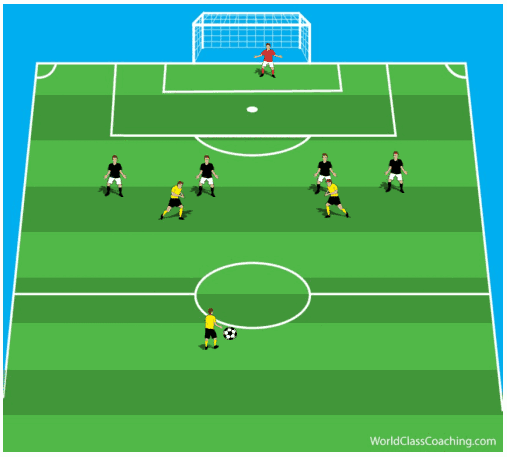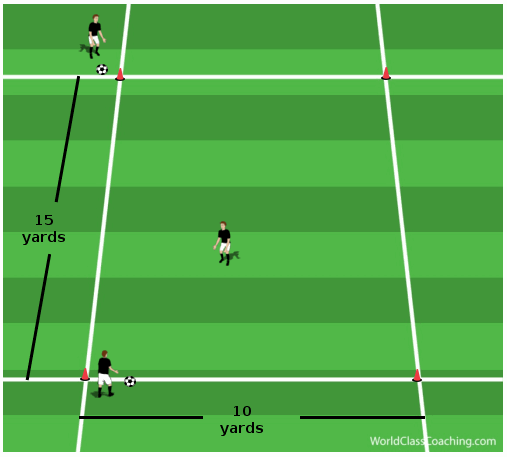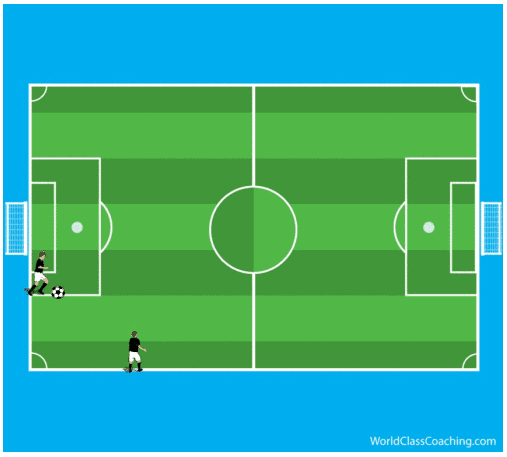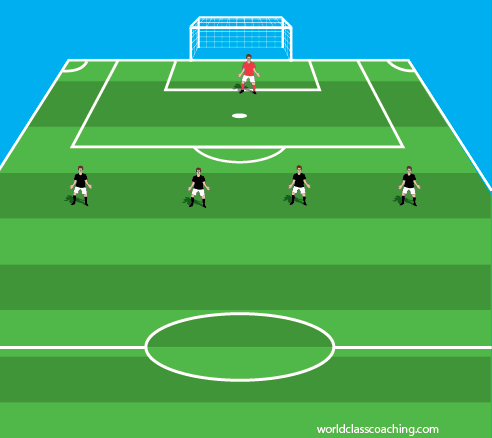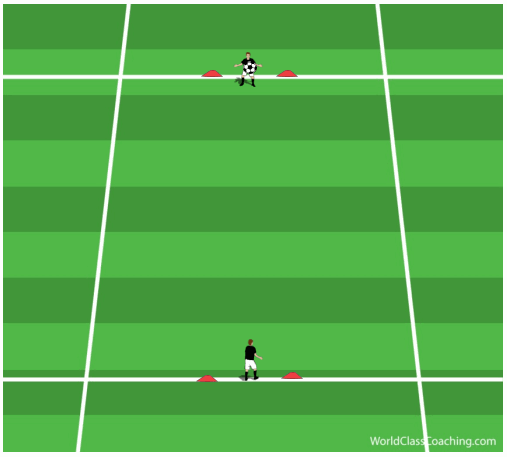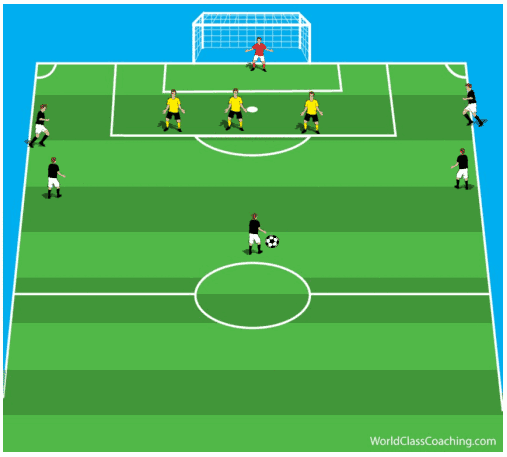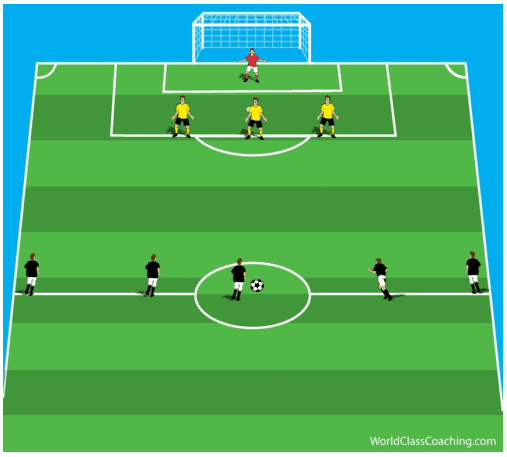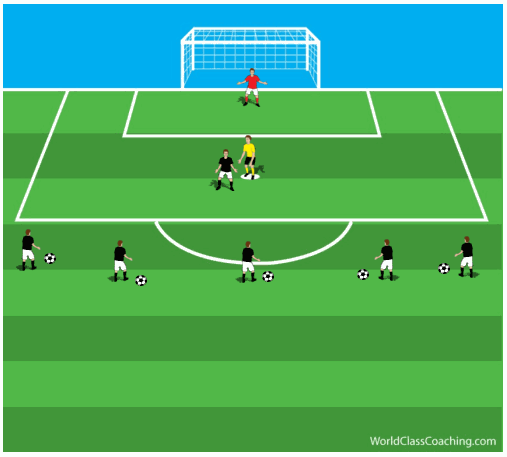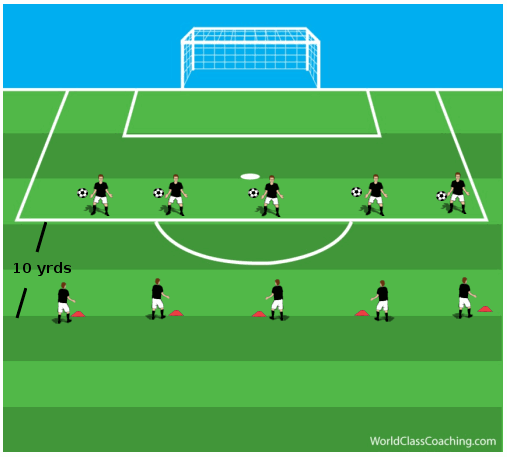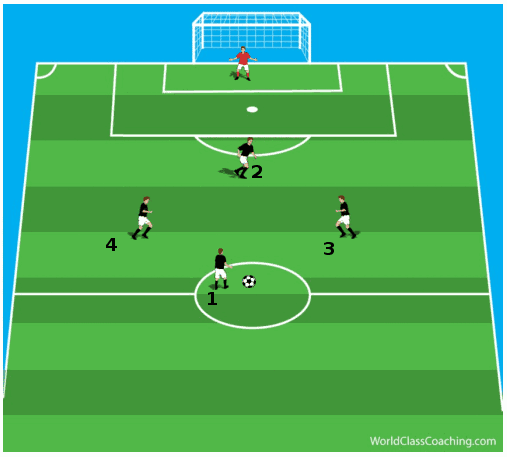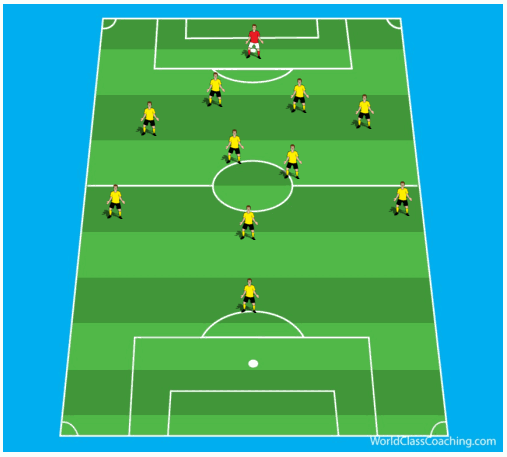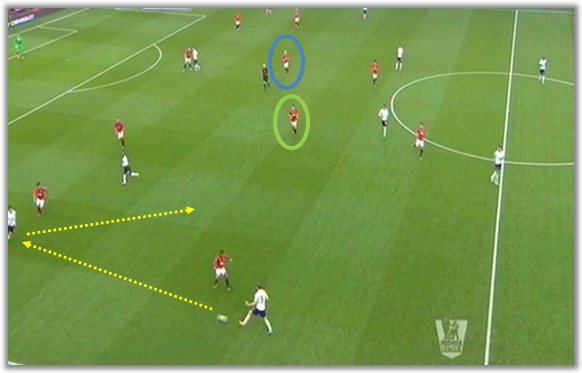By Justin Cresser Author of Total Soccer Conditioning: A Ball Orientated Approach
Being able to take a player on 1 v 1 is an important and beneficial quality for soccer players of any playing position. For the attacking player to be successful in 1 v1 encounters, they must be able to beat the defender with a change of pace or by using a variety of moves and fakes to get around them. Players therefore need to be comfortable and confident at performing different moves, and doing so at speed.
Today’s activity will focus on teaching/practicing various moves and skills using an individual dribbling training format. We have also modified the exercise so that we can target a number of conditioning parameters that are necessary for soccer athletes.
Set-up and Design:
This exercise uses the space between the top of the 18-yard box and the half-way line for the playing area. Begin by setting up a 20 yard by 20 yard grid in the centre of the playing area. Place a small pylon 10 yards away from the middle of each side of this 20 by 20 grid. Give each cone a letter. Divide your players into pairs and give each group a different number. Have each Player dribble around inside this area performing a specific move (scissors, Ronaldinho, Stanley Matthews, etc.) as quickly as possible but under control (Figure 1).
(For simplicity, we have only used 6 players in the illustrations. However, you will likely have between 10 to 14 players when you choose to do this activity, which means 5 to 7 groups of two.)
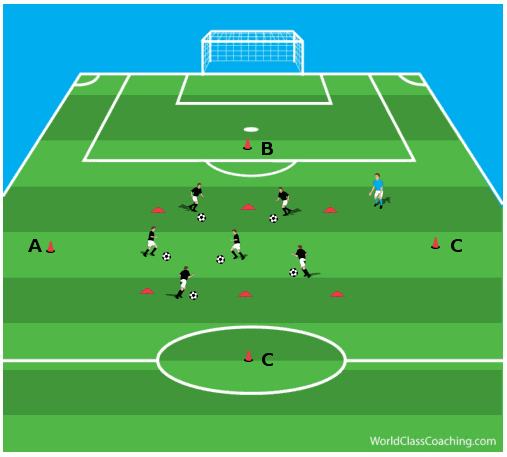
After a few seconds, the coach will call a specific number as well as the letter of one of the
Continue reading
